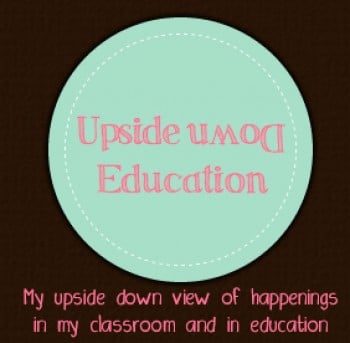Hello everyone. It’s been a while. I’ve been so busy and when I have time to write, I’m just exhausted. I think we all get there at some point. I’ve been to the edge of burnout and very discouraged. Through that I decided I needed a refresh and attended a conference that focused on tech, how students learned best with tech, and what it does to the brain. I needed to be around others who see tech and learning beyond tools and training how to use them. This post is kinda long, stick with me, or at least scroll to the bottom to get the link to the “Challenge Cards.”
It’s funny how things that have been on your mind are brought to the forefront when you hear experts talking about information that supports it. Lately I have been really worried about how we teach science. I know I have blogged about this in the past, but I really have focused a lot on how to bring science and STEM into elementary classes but it is middle school I am really starting to worry about. I had a friend post not too long ago a statistic about how many less labor jobs we have now as compared to the past. It reminded me of what Mark Coleman said the other day, “we don’t need to focus on preparing students for a world whose jobs don’t exist yet but a world with no jobs.” Are we teaching STEM and engineering skills so students have the opportunity to become entrepreneurs or designers or innovators, or are we too focused on preparing them for what we think the teachers will need them to do in the next grade level? “They need those skills in high school” is just sad because usually those “skills” aren’t appropriate in a high school classroom either.
Reading and math have gotten huge overhauls in elementary schools, kids are leaving able to read all texts or solve math problems in different ways. In elementary schools science might be the PBL lessons of the day or as a part of reading curriculum with hands on activities. When they move to middle school, are they still getting that? Or are they taking pages of notes and doing fill in the blank labs where they are all finding the same results? I’ve always been a bit supporter and “pusher” of STEM in the classroom, beyond just a makerspace in a library. It needs to be part of everyday math and science learning. We need to bring in those maker and STEM tools as well as the engineering process into science classrooms.
Last week I was helping a middle schooler study for a test. I asked her about Pangea and she stopped and said, “I have no idea what that is.” But her test was on continental drift so I immediately was sick to my stomach. I Googled and showed her the results and she said, “oh yeah I copied notes about that all week, just didn’t know what it was or how to say it. That picture of it makes the notes make sense now.” That made me pause (and maybe a bit angry) because she not only just got surface level facts about this but she didn’t even hear the word. This isn’t science, this is basic literacy. Exactly what life-long skill is copying notes? A skill for high school? Hope not, that high school teacher wouldn’t be doing their job either. No one that age should just learn from writing something. It leaves out a huge group of students who do not learn that way. How much more meaningful would it have been if she was given one of the 3 arguments that Wagner presented to support Continental Drift? It would have became more than a list of facts.

Part of what science really is is to have students question the world around them. Another part of it would be finding answers to problems they find in our world, this brings those STEM skills to life. Using PBL questions or challenges get them to start questioning and learn those facts as they find solutions. Often when we bring up PBL or using engineering/STEM challenges teachers freak because they don’t know what questions to ask or struggle with connecting it to their curriculum. But really, you are scientists, you know why students should know the content and how they could use it. Also, it should be fun but with a touch of frustration, they need to think. Lastly, keep it simple for you. Just think of something basic.
I love practice of when elementary librarians or teachers use STEM kits or tools they create “challenge cards” to keep students on track or guide them with questions. To help with the brainstorming of PBL , inquiry, or engineering lessons, I have created some “challenge cards” for the space unit in middle school earth science (what I used to teach). Here are some examples of Challenges that are easy yet students can’t just Google the answer and the answer can never be copied in notes.
These are just a start but could teach more skills than a lecture or note taking. It would reach kids of all abilities and the process plus product would make for a great assessment of the standards. By the way, I listed the standards covered on the slides.
Maybe you hate the idea. Maybe you can see the value. Either way, we have to do something because what we are doing isn’t working.
